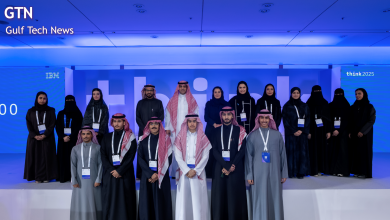The transparency imperative: Why AIOps must lead tech’s net-zero accountability movement

The tech industry’s grand promises about AI and sustainability have hit a wall. While organizations trumpet AI solutions for climate change, the technology itself consumes a staggering amount of energy.
According to the International Energy Agency, data centers, AI, and cryptocurrency collectively consumed 460 terawatt-hours (TWh) of electricity in 2022—about 2% of global demand. By 2026, this number is expected to more than double to 1,000 TWh, surpassing the annual electricity consumption of entire countries like Germany or Japan.
This situation has led to growing scrutiny, with some questioning whether AI’s sustainability efforts genuinely reduce environmental impact or merely serve as a strategic narrative for organizations keen on PR. But amid this crisis of credibility, a solution is emerging from an unexpected quarter: artificial intelligence for IT operations (AIOps).
By embedding real-time carbon tracking and automated optimization directly into IT infrastructure, AIOps is transforming sustainability from a marketing buzzword into a measurable metric. For the first time, companies can’t just claim their AI is green—they have to prove it.
The hidden cost of green AI
Beyond the staggering electricity consumption, the true environmental cost of AI extends deeper into our infrastructure. Each new breakthrough in AI capability demands more powerful hardware, more extensive training runs, and more complex deployments. The demand for bigger AI models has intensified a global chip shortage, caused by supply chain problems, energy demands of large-scale computing, and geopolitical issues.
Even cloud providers’ claims of running on renewable energy often mask the reality that peak AI workloads force them to fall back on fossil fuel sources during high-demand periods.
This gap between intention and impact underscores a systemic issue: without tools to measure, verify, and mitigate AI’s footprint, even well-meaning initiatives become performative.
A prime example is Saudi Arabia, where a SAR 92.90 billion (USD 24.8 billion) investment in digital infrastructure since 2017 has fueled explosive growth in data centers and cloud services. This rapid expansion has brought energy efficiency and carbon tracking to the forefront of national priorities, highlighting the urgent need for robust measurement and mitigation solutions.
AIOps: A bridge between promises and progress
AIOps platforms, originally designed to streamline IT operations, are evolving into indispensable tools for climate accountability. By integrating environmental metrics into their analytics, these systems offer three transformative capabilities:
● Real-time carbon tracking: Modern AIOps platforms monitor emissions at the workload level, providing granular insights into which applications, processes, or services are the most carbon-intensive. They integrate with energy meters, cloud providers, and hardware sensors to calculate emissions using industry-standard models like the Greenhouse Gas Protocol. This allows businesses to take immediate action, such as dynamically adjusting resource allocation, shifting workloads to renewable energy-powered data centers, or implementing low-power operation modes outside of peak hours. Reflecting this technological potential at a broader scale, Saudi Arabia’s Saudi Green Initiative drives more than 85 initiatives focused on smart infrastructure and emissions reduction, targeting a substantial 278 million tonne annual cut in carbon emissions by 2030, underscoring the power of data-driven sustainability strategies.
● Automated carbon offsetting: Beyond diagnostics, AIOps can trigger actions. While fully automated carbon offset purchasing remains an aspiration, current platforms provide sophisticated emissions tracking that facilitates strategic offset decisions. Microsoft’s Azure Emissions Impact Dashboard and Google Cloud’s Carbon Footprint tool represent early steps in this evolution, offering detailed emissions data that companies can use to guide their offset strategies. These tools enable organizations to understand their carbon footprint in near real time, though manual intervention is still required for offset purchases. Microsoft’s pledge to be carbon negative by 2030 exemplifies how companies can use these insights to drive comprehensive sustainability strategies.
● Code-level efficiency audits: AIOps tools analyze software for energy inefficiencies, flagging resource-heavy code that consumes excessive computing power. These systems can detect poorly optimized algorithms, redundant loops, or inefficient database queries, helping developers refine their applications for sustainability. For example, Microsoft CodeCarbon analyzes code for energy-draining patterns and provides developers with actionable feedback.
By integrating tools like this into the DevOps pipeline, companies can ensure that sustainability becomes a core consideration in every stage of software development.
The transparency mandate
For AIOps to legitimize the tech industry’s climate efforts, companies should adopt radical transparency. This starts with disclosing the energy use of AIOps platforms themselves—after all, if the tool meant to reduce emissions consumes excessive energy, it becomes part of the problem. Providers should publish third-party audits to verify their systems’ efficiency and environmental impact.
Additionally, demystifying algorithms is critical; black box tools erode trust, so adopting open-source frameworks or explainable AI (XAI) principles ensures stakeholders understand how decisions—like carbon offset purchases—are made.
Finally, while automation is powerful, human oversight remains essential. Teams should review AIOps recommendations to ensure they align with both environmental goals and operational realities, striking a balance between efficiency and ethics. Without these steps, AIOps risks becoming another layer of opacity in the fight for sustainability.
How organizations can incorporate AIOps into IT sustainability practices
● Assessing current IT carbon footprint: Conduct a comprehensive sustainability audit to identify high-energy consumption areas and set benchmarks for improvement.
● Implementing AIOps tools: Choose AIOps platforms with built-in carbon tracking, intelligent workload optimization, and automated offset capabilities to streamline energy efficiency efforts.
● Setting clear sustainability goals: Define quantifiable emissions reduction targets that align with overall IT strategy and environmental policies.
● Monitoring and adapting: Continuously analyze AIOps insights to refine policies, optimize energy use, and integrate sustainability best practices across IT operations.
● Ensuring transparency and compliance: Regularly publish detailed sustainability reports, ensure compliance with global environmental regulations, and communicate progress to stakeholders.
The role of ManageEngine in advancing sustainable AIOps
The path forward is clear: organizations must move beyond treating environmental impact as a marketing exercise and embed sustainability into their operational DNA. AIOps provides the framework for this transformation—but success demands tools that go beyond optimization to deliver real accountability.
Companies like ManageEngine are leading by example. By combining intelligent automation with deep observability, ManageEngine’s AIOps platforms empower IT teams to right-size workloads, prevent resource sprawl, scale infrastructure in line with demand, and proactively resolve issues that waste energy.
These capabilities not only enhance operational efficiency but also help reduce emissions at scale.
This becomes especially critical in data centre environments, where high energy consumption and operational inefficiencies can drive up both costs and carbon emissions.
Ensuring sustainable operations in these settings require strict adherence to thermal best practices—most notably, the ASHRAE (American Society of Heating, Refrigerating and Air-Conditioning Engineers) guidelines.
ManageEngine’s AIOps tools support this effort by continuously monitoring key environmental and infrastructure metrics such as temperature, Power Usage Effectiveness (PUE), server utilization rates, airflow, and more. When anomalies arise—whether it’s a temperature hotspot, abnormal power draw, or an inefficient cooling pattern—the system can automatically trigger remediation workflows to resolve the issue.
Through actionable insights, innovative tools, and a commitment to transparency, ManageEngine enables businesses to align IT operations with global net-zero goals. Its AIOps solutions make sustainability a measurable, achievable priority—bridging the gap between technological advancement and environmental accountability.





